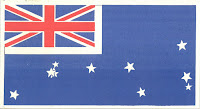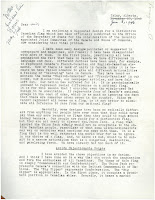 This week marks the 50th anniversary of the Stonewall riots in Greenwich Village. The mass demonstrations were a crucial turning point for the gay rights movement, leading to mobilization and advocacy and
creating the foundations for today's LGBTQIA+ activism. The ripple effect hit some college campuses almost immediately, but took some time to reach Hanover. On January 2nd, 1978, Stuart Lewan '79 publicly asserted the presence of Dartmouth's gay community by pitching a table at Winter term registration for a new "Gay Student Support Group." A sign over his head proclaimed, "Get on Down and Party with the Students for Social Alternatives." 55 students signed up for the promised regular newsletter.
This week marks the 50th anniversary of the Stonewall riots in Greenwich Village. The mass demonstrations were a crucial turning point for the gay rights movement, leading to mobilization and advocacy and
creating the foundations for today's LGBTQIA+ activism. The ripple effect hit some college campuses almost immediately, but took some time to reach Hanover. On January 2nd, 1978, Stuart Lewan '79 publicly asserted the presence of Dartmouth's gay community by pitching a table at Winter term registration for a new "Gay Student Support Group." A sign over his head proclaimed, "Get on Down and Party with the Students for Social Alternatives." 55 students signed up for the promised regular newsletter.Lewan followed up with an editorial in the January 6th issue of The Dartmouth entitled "Helping gays adjust to Dartmouth." He starts with a nod to Stonewall by bemoaning, "So, about 10 years after most other colleges of similar prestige, Dartmouth is giving birth to its first gay student group. Why has it taken so long?" He then lists all of the things that gay people feared at Dartmouth and beyond, and calls for broad campus support of the community, but most importantly for Lewan, he calls for the gay community at Dartmouth to come out of the closet, claim its place on campus, and support each other to fight back against fear.
There is a militant tone to his editorial--and it provoked some predictable backlash in the letters to the editor, but Lewan's work, along with that of fellow student leaders, helped begin the long process of opening the campus and making it someplace where more people could feel welcome. You can learn a lot more about Stuart Lewan by listening to his oral history on the Dartmouth SpeakOut site.



